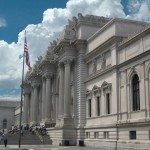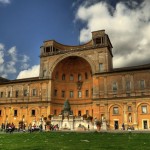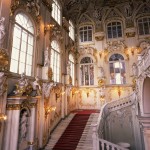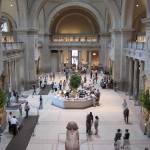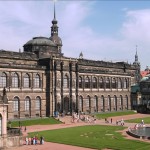Museum of fine arts in Brussels
Posted On August 1, 2010
This museums has one of the largest collections of art right from the medieval period right to the contemporary period, in the whole world.
The story of this museum begins with an emperor; the art could only be exhibited publicly when the Austrians had been driven out of the southern part of Netherlands.
When napoleon came along, he seized most of the paints here from Brussels and sent the most brilliant of these paintings to the museum de louver in Paris, France.
The museum de louvre could not accommodate the large collection of the Brussels paintings. So napoleon ordered that there be fifteen departmental museums to hold the paintings.
About fifty of these stolen paintings were sent back to Brussels for their first exhibition. .
And napoleon was defeated and faced his downfall; most of these paintings were returned back to the Belgium museum.
By then the ownership of the museum was passed onto the Dutch king William the first.
After about sixteen years when Belgium was declared an independent country,
The museum was renamed as the royal museum of painting and sculpture in Belgium.
The museum received royal patronage and the collection of the museum got bigger due to donations, purchases and acquisitions.
The new building was added to the museum which was constructed by balat. This new building had royal dimensions and was then known as the forum. This was a four thousand nine hundred square foot with a foyer and a gallery that was on the upper floor.
This place was made for the accommodation of the many ladies in their hoped shirts and the men in their uniforms.
This room consisted of most of the neo classical paintings and sculptures and today it has sculptures by auguste rodin and jef lambeaux.
There is a staircase that goes upwards where famous paintings from the Dutch, Flemish German, English, Spanish, and Italian schools are art and painting.
The art is chronologically arranged and color coded.
The arrangement is said to be helpful because with so many paintings and sculptures, it is not too difficult to lose one painting.
The royal museum is one of the richest collections of art in the world.

There is a blue tour that is reserved for the fifteenth and sixteenth century saints and legends which include the paintings of rogier Weyden and other anonymous painters who painted on similar lines.
The elders Venus with the cupid and the portrait of dr. j scheyring.
Gerard’s exquisite mother and child with the milk soup give us an insight in the everyday life of the holy family.
The sixteenth century has paintings from Flemish painters such as Quentin massy and Joachim beuckalaer.
The census of Bethlehem and the wedding dance and the martyrdom of saint silvinius.
Philippe de champaigne and peter Paul Rueben’s has also a lot of paintings which are displayed here on this floor.
The death of a marat is one of the few paintings which starts the drum roll on the nineteenth century paintings.

The sphinx is a painting by fernabnd khnopff . In addition to these paintings there are various others by guagin Vuillard and matisse.


